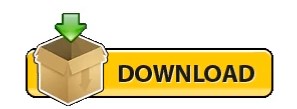

- #Mac preview make a pdf bigger for printing how to
- #Mac preview make a pdf bigger for printing download
Now the size control is in the page set-up menu: You can try to set print size for example to 90%, then return to the print menu and check if margins are correct and nothing is cut-off. To increase the printed area on such files, you can select "none" instead of "fit to printable area" and also select "Auto-rotate and center". This will avoid cut-off from the margins but on some scans with already large margins, the margins will now be even larger and the printed music even smaller. Most foolproof way to print: Make sure, in the Adobe Reader Print menu "fit to printable area" has been chosen. You have to take account of this to obtain the best results. Incomplete files (especially in MS explorer): If a file is repeatedly truncated, clear the browser cache.įiles on imslp are collected from many different sources. There are compatibility issues with some newer pdf-files and Mac-Preview, and Acrobat portfolios are also not recognized. Try to open the file with a recent Adobe Reader (free software: ). This allows you to choose a program to open the file and may circumvent many problems in the browser window. For items on the EU-, US-, or Canadian server only a disclaimer page will initially open where you have to agree that you are legally entitled to download.īetter: right-click (PC) or option-click (Mac) and save the file on your computer. Click on the file description or the yellow arrow - and the file will open in your browser. If you point your mouse over the file description on the left, the arrow next to it will turn yellow.
#Mac preview make a pdf bigger for printing download
Check the DPI before you printĪfter you download your file to your desktop from PicMonkey, you can double-check the DPI of your image before printing.Downloading and printing files Downloading files from a workpage: So, save as PNG to get the best print quality. JPG is particularly hard on text and just plain mean to small text. Typically by the time you get to the printer you are on the 3rd or 4th "generation" (number of times the tile has been saved over). JPG is destructive to image quality and the more you save over it the worse it gets. This means that you can edit the file as many times as you like without worrying about image quality. PNG files compress your image without throwing away information. We suggest finding an area with fine detail such as an eye when adjusting the Sharpen amount.

Only at 100% do you really see how much Sharpen is being applied to your photo. You can do this by clicking the percentage menu in the lower right corner. When you apply Sharpen you have to zoom the photo to 100%. SEE: Basic Edits: Exposure, Colors, Sharpen Prints need more sharpening than computer monitors, so apply just a little too much. If you don’t feel like doing the math, here’s a handy table:Īnother thing you can do to your image to improve its clarity when printed is to apply some Sharpening to the image. That means in order to create a 8 x 8 print on a 300 DPI printer, you want 2400 x 2400 pixels. To do that, just multiply 300 by the number of inches the print is going to be. Since we know the printer is going to print at 300 dots per inch, all we need to do is figure out how many pixels to give the printer. (Keep in mind, some printers may print at a smaller or larger DPI, so you'll want to be aware of that when sizing for prints.) Get a 300 DPI file So your image file should contain the same number of pixels per inch that your printer is going to be printing per inch.
#Mac preview make a pdf bigger for printing how to
SEE: How to Make a High Resolution Image for Print or Web Understand DPI and PPIģ00 DPI means “dots per inch” as in: the printer is going to spit out 300 little dots of ink for every inch of your photograph. This resizing does bad things to image quality, especially if the image you are sending to the printer is a JPG because JPGs will not maintain the pixel integrity of your image as well as a PNG file type will. If you send too many it has to shrink the image smaller. If you send too few pixels to the printer it will just make pixels up in an effort to fill the page. To get the best resolution when printing, you need to signal to your printer how many pixels per inch (PPI) you want it to print. Here are some guidelines for getting the best quality prints from your photos: Start with the right size and shape


 0 kommentar(er)
0 kommentar(er)
